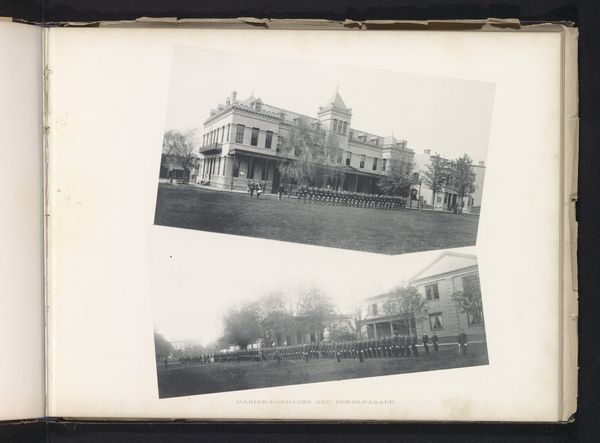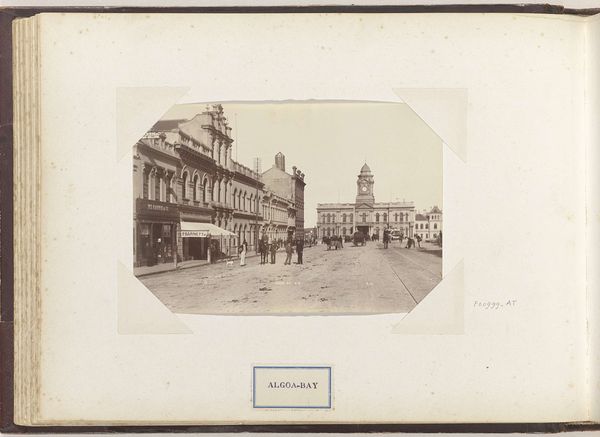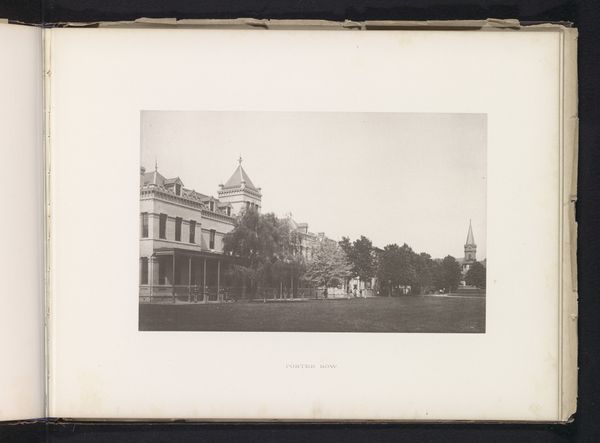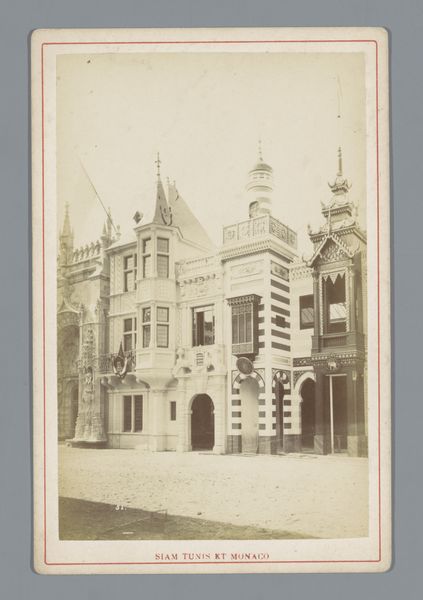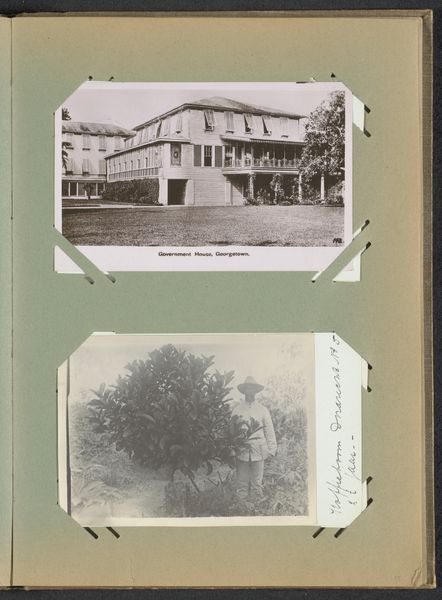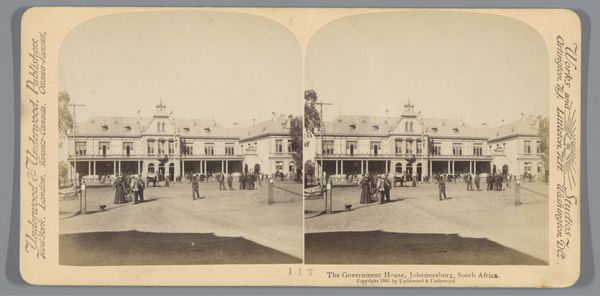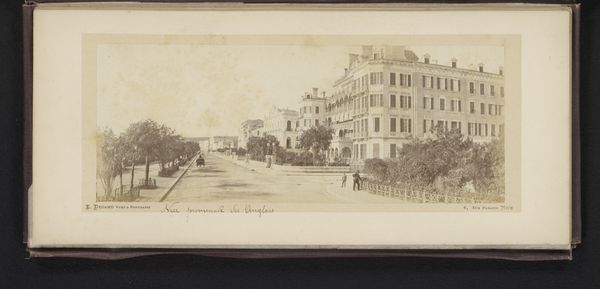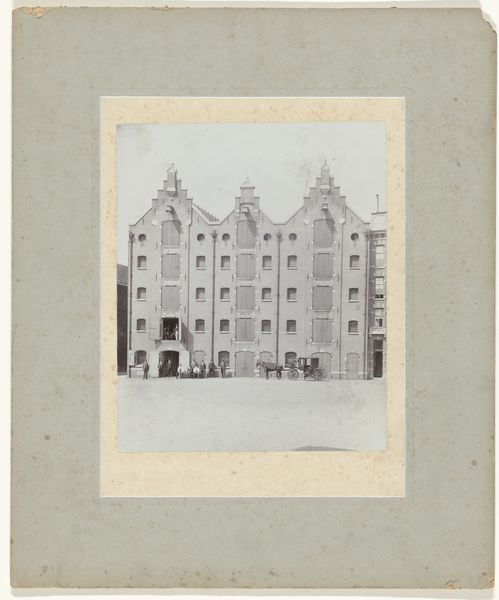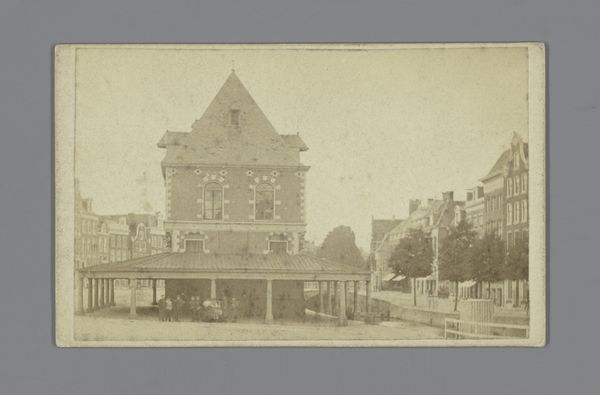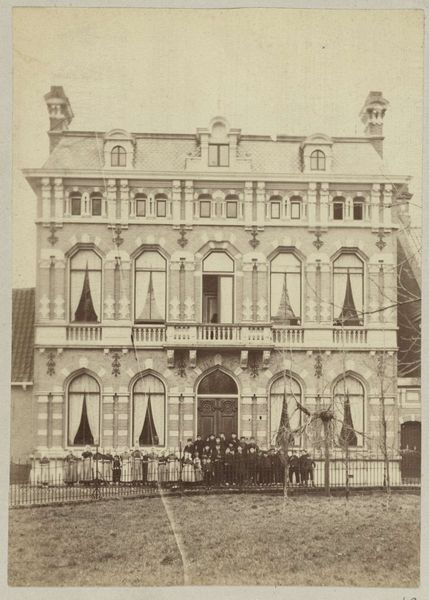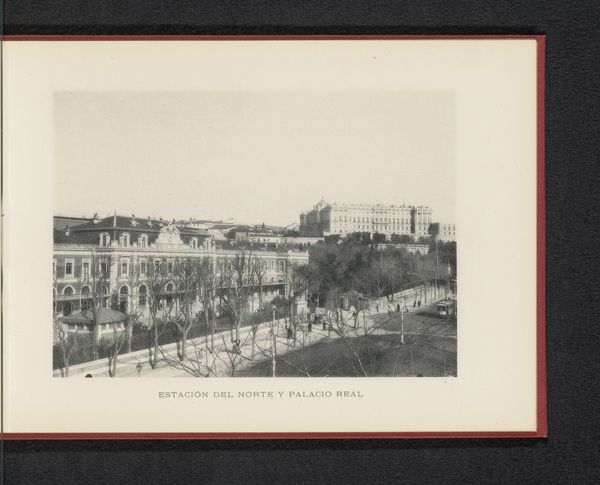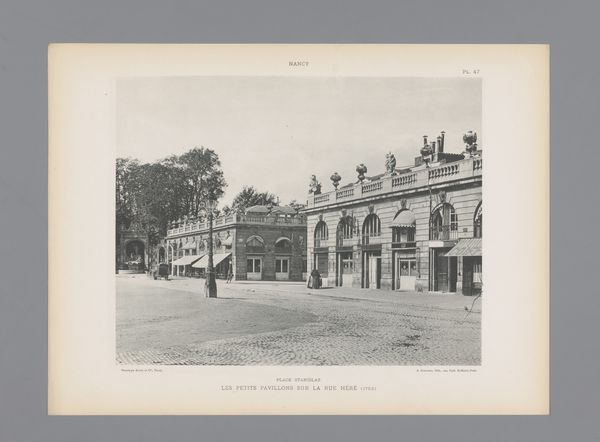
print, photography, albumen-print
#
aged paper
# print
#
neo-impressionism
#
photography
#
cityscape
#
albumen-print
Dimensions: height 363 mm, width 272 mm
Copyright: Rijks Museum: Open Domain
Curator: So here we have a photographic print from between 1890 and 1905 attributed to Barnett & Co., featuring albumen prints of Pretoria and Johannesburg. I'm immediately struck by the aged paper, it almost feels like holding a piece of history. Editor: It does feel really tangible! Seeing these cityscapes makes me think about how much has changed since then. How do you interpret the choice of material, and why do you think the photographer used this technique? Curator: The albumen print process, popular in the late 19th century, highlights the intersection of artistry and industrial chemistry. Think about the labor involved – coating paper with egg whites, sensitizing it, printing with sunlight. Each step dictated by the material properties. These processes weren't merely neutral tools; they influenced aesthetic choices and reach. Do you think this process democratized or stratified the ability to depict and consume cityscapes? Editor: I hadn't considered the production aspect so deeply. It's easy to get lost in the images themselves. Perhaps it created a wider audience than painting, but access to photographic technology still must have been limited. Curator: Precisely. Also, consider the consumption of such images. Were these for personal mementos or distributed for commercial gain? The material itself could tell us a lot about social access, its context within a wider culture, its impact and spread through photographic reproductions. The contrast of the architecture suggests the aspirations and investments of the colonial project. It’s more than just what’s in the pictures; it’s about who could make them, who could own them, and how they circulated. Editor: Thinking about it like that adds a whole new layer. It shifts the focus from just seeing the picture to understanding its entire life cycle, the cultural capital of materials. Curator: Exactly! And by recognizing that art, or any visual record, does not simply materialize. We get the opportunity to understand labour relations, economy, the effect of industry and the society these create, all playing integral roles within an art work's significance. Editor: This has totally changed my perspective. Thanks for pointing out the significance of the means through which it came into being. Curator: Absolutely. Seeing the finished product and recognising its creation gives one insight into the socio-economic situations prevalent at the time.
Comments
No comments
Be the first to comment and join the conversation on the ultimate creative platform.

